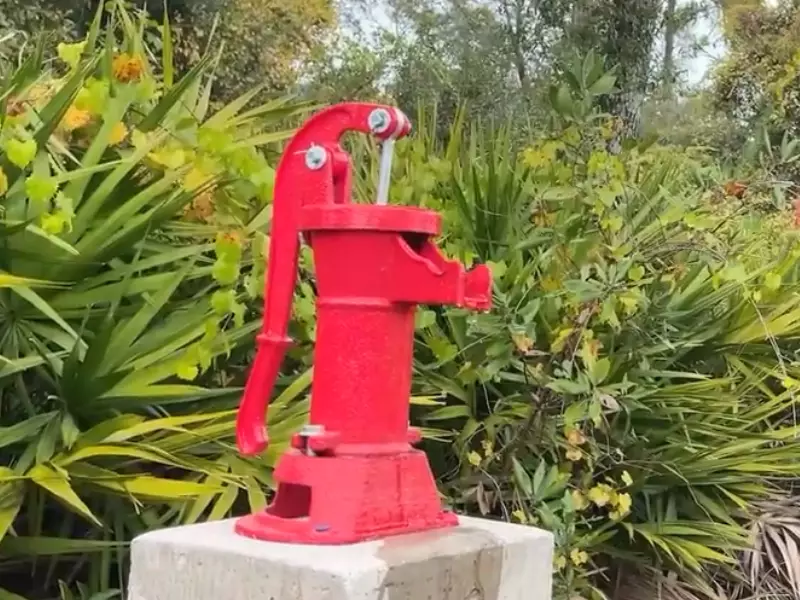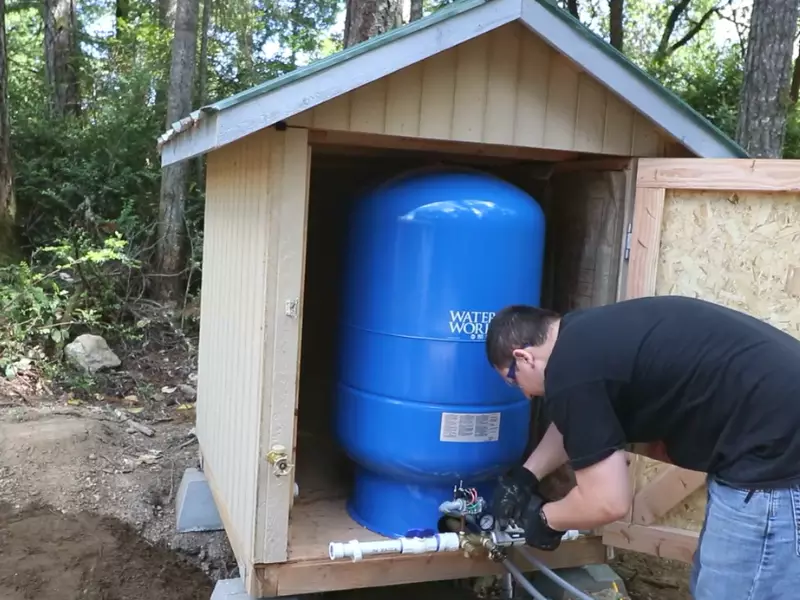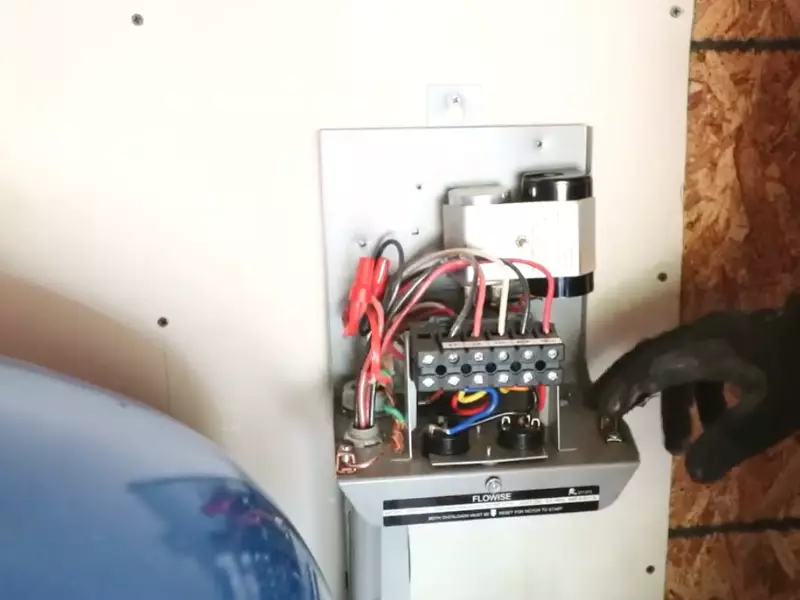Moving to a house with well water can be an enticing prospect for many, given its numerous benefits. Being a natural source, well water offers a fresh taste and lacks many of the chemicals found in municipal supplies. However, there’s more to consider than just the advantages, such as the challenges tied to water quality and maintenance.
Shifting to a well-water home implies independence from the traditional city water system, resulting in potentially substantial cost savings. Furthermore, one can control and understand the source of their water more closely, ensuring a more personalized and eco-friendly consumption experience.
Well water sources have been part of human civilization for centuries, lending authenticity to living experiences. By tapping into the earth’s natural reservoirs, homeowners can relish the purity and richness of nature’s liquid gold.
Benefits of Well Water
Natural Source, Fewer Chemicals
Well water is untreated and naturally filtered by the earth, reducing exposure to many municipal additives. This leads to:
- Bolded: Fresh taste
- Reduced chlorine content
- Absence of industrial contaminants

Cost Savings
Owning a well can eliminate monthly water bills. Over time, this can lead to:
- Bolded: Significant savings
- Control over water usage
- Reduction in unexpected tariff hikes
Independence from Municipal Supply
This ensures:
- Bolded: Uninterrupted supply
- Control over water source and quality
- Freedom from city water restrictions
Common Concerns
Choosing to live in a home with well water brings many benefits, but it also introduces some challenges that every potential homeowner should be aware of.
Water Quality
Tapping directly from the ground means that the water hasn’t undergone rigorous treatment processes that municipal water experiences. Thus, certain concerns may arise:
- Mineral Content: Well water often has a high mineral content, especially calcium and magnesium. Over time, these minerals can accumulate on surfaces, fixtures, and appliances, leading to limescale or other mineral deposits. This can wear out appliances faster and can cause unsightly buildup on faucets and showerheads.
- Hard Water: Hard water, characterized by a high concentration of dissolved minerals, can lead to a series of domestic challenges. From dull-looking laundry, spots on dishes, to a reduced lathering ability of soaps and shampoos, its effects can be quite noticeable. Over an extended period, hard water can even lead to pipe blockages.
- Filtering and Treatment Options: To address water quality concerns, many homeowners invest in water softeners or filtration systems. Water softeners replace calcium and magnesium ions with sodium ions, while filtration systems can remove various contaminants. Additionally, ultraviolet (UV) purifiers can be effective against microbial contaminants.
Supply Reliability
While having a private water source offers independence, it does come with its own set of concerns:
- Seasonal Changes: The water level in a well can vary with seasonal changes. For instance, during a dry spell or a particularly hot summer, the water table might drop, affecting the well’s output.
- Replenishing Rates: Not all groundwater sources replenish at the same rate. Over-extraction, without allowing the source to recharge, can lead to well drying up.
- Drought Concerns: In areas prone to drought, relying solely on well water can be risky. Prolonged periods of low rainfall can cause wells to run dry, demanding alternative water sources or even the drilling of a new well.

Essential Tests Before Purchase
Before purchasing a property with a well, it’s crucial to ensure the water source is both safe and sustainable:
- pH Levels: The pH level of water measures its acidity or alkalinity. Extreme pH levels can indicate contamination or other underlying issues. While neutral pH is around 7, well water should ideally fall between 6.5 to 8.5 for safe consumption.
- Checking for Contaminants: Beyond pH, it’s essential to test for bacteria, nitrates, and other potential contaminants. Elevated nitrate levels can be particularly concerning, especially for pregnant women and infants.
- Importance of Periodic Testing: Ensuring water quality isn’t a one-time task. Groundwater conditions can change, making periodic testing necessary. Most experts recommend testing well water at least once a year.
Well Maintenance
Maintaining the well ensures both the quantity and quality of water remain optimal:
Routine Checks
Regular monitoring is crucial to detect and address potential issues early:
- Inspecting Well Caps and Seals: These prevent contaminants, pests, or debris from entering the well. Periodically checking for cracks or damages can prevent bigger issues down the line.
- Cleaning: Over time, wells can accumulate debris or even algae, affecting water quality. Regular cleaning can prevent taste and odor issues.
Common Repairs
Like any system, wells require occasional repairs to keep them in optimal condition:
- Pump Replacements: The pump is the heart of the well system, pulling water from the ground and into the home. Over time, wear and tear can reduce its efficiency. Being vigilant about any drop in water pressure can hint at a pump issue.
- Addressing Reduced Water Flow: Apart from pump issues, reduced water flow can result from sediment build-up or even a dropping water table. Solutions might range from cleaning the well to deepening it.
- Murky or Discolored Water: If water suddenly turns cloudy or changes color, it might be due to a range of issues, from a broken well lining letting in sediment to contamination. Immediate testing and necessary actions are vital.
Legal and Regulatory Aspects
Moving to a well-water home isn’t just about managing the water source. It’s essential to be aware of legal aspects:
Ownership Rights
Groundwater ownership can be complex, intertwining with land rights and local regulations:
- Groundwater vs. Land Ownership: In some areas, owning the land doesn’t necessarily grant rights to the groundwater beneath it. It’s crucial to check local laws and understand one’s rights.
- Restrictions and Allowances: Even if one has rights to the groundwater, there might be restrictions on the volume of extraction, especially in drought-prone areas.
Permits and Compliance
Maintaining compliance ensures one’s well remains a reliable and legal water source:
- Necessary Permits: Drilling a new well, or even making significant modifications to an existing one, might require permits. It’s essential to consult with local authorities.
- Local Regulations: Different regions might have varying regulations, from water testing frequencies to treatment standards. Staying informed and compliant prevents legal troubles.
Costs Involved
Owning and maintaining a well comes with ongoing costs, beyond the initial setup:
- Testing and Setup: The initial stages of establishing a well, from drilling to setting up pumps and testing water quality, can be a significant investment.
- Maintenance Expenses: Regular checks, cleaning, and occasional repairs add to the running costs.
- Treatment Systems: If the water quality isn’t optimal, homeowners might need to invest in treatment systems, from simple filters to more complex UV purifiers and softeners.

Environmental Considerations
Being a responsible well owner isn’t just about ensuring water quality and availability for personal use; it also means considering the broader environmental impact of your well.
Sustainable Water Use
- Efficient Use: With finite groundwater resources, it’s essential for well owners to use water efficiently. This might mean adopting water-saving appliances, fixing leaks promptly, and being mindful of overall consumption.
- Recharge Considerations: Overdrawing from a well can prevent it from recharging properly. Understanding the natural recharge rate of your groundwater source can help in planning sustainable water usage.
Impact on Local Water Tables
- Local Effects: Over-extraction can lead to a decline in the local water table, affecting not just your well but also neighboring water sources, potentially leading to regional water shortages.
- Ecological Impacts: Groundwater is often a vital component of local ecosystems, providing hydration for plants and animals. Unsustainable well use can disrupt these ecosystems, causing long-term damage.
Eco-friendly Practices for Well Owners
- Natural Filtration: Instead of relying solely on mechanical filters, consider integrating natural filtration systems like reed beds, which not only purify water but also support local biodiversity.
- Limit Chemical Usage: Whether it’s for cleaning the well, treating water, or around the household, minimizing chemical use ensures fewer pollutants seep into the groundwater.
- Rainwater Harvesting: Augmenting well water with harvested rainwater can reduce the strain on the well, allowing for more extended periods of natural recharge.
Preparing for Emergencies
Having a private well comes with a certain degree of independence, but it also demands preparedness for unforeseen challenges.
Having Backup Water Sources
- Storage Tanks: Consider installing storage tanks that can hold a few days’ worth of water, providing a buffer during any well outages.
- Alternative Sources: In areas prone to drought or where groundwater is not abundant, having connections to municipal water lines or collecting rainwater can be a lifesaver.
Generator Setups for Electric Pumps
- Power Outages: Wells with electric pumps can come to a standstill during power outages, potentially leaving homes without water.
- Backup Generators: Investing in a reliable generator ensures that even during prolonged power cuts, the well pump remains operational. It’s crucial to ensure the generator can handle the pump’s power needs and has enough fuel storage.
Creating an Emergency Response Plan
- Potential Issues Identification: Recognize the most common challenges associated with your well, from dried sources to pump failures.
- Action Plans: For every identified issue, have a clear action plan. This might mean having spare pump parts on hand or knowing local experts who can be called upon for urgent repairs.
- Regular Drills: Just like fire drills, periodic testing of the emergency response plan ensures that when a real crisis hits, every member of the household knows their role, leading to quicker resolution.
Frequently Asked Questions
What is the Lifespan of a Typical Well?
Most wells last between 30 to 50 years, though regular maintenance can extend this lifespan.
How Can I Improve Water Taste and Odor?
Installing carbon filters and regular cleaning can address taste and odor issues in well water.
How Do I Handle Temporary Water Outages?
Ensure you have a backup water source, check the well pump, and consider calling a professional if the problem persists.
Conclusion
Making the shift to a well-water home is an adventure in self-reliance and a step closer to nature. While it provides unparalleled independence and potential cost savings, it also demands understanding, responsibility, and regular maintenance.
Embracing the authenticity of well water enriches living experiences, allowing homeowners to savor nature’s purity. Yet, it’s essential to stay informed, prepared, and proactive in maintaining this precious resource.
In the end, a well-water home isn’t just a residence; it’s a commitment to sustainable living, a pledge to stewardship, and an ode to nature’s generosity.